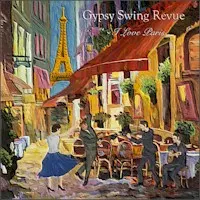Time: 66:41
Size: 152.7 MB
Styles: Big band, Trombone jazz
Year: 2003
Art: Front
[4:53] 1. Cherokee
[5:05] 2. Tocache
[6:24] 3. A Flower Is A Lovesome Thing
[5:41] 4. Lament Basin Street Blues
[4:33] 5. April In Paris
[6:08] 6. Lester Leaps In
[5:07] 7. Moment's Notice
[7:10] 8. Dolphin Dance
[7:13] 9. Walkin'-N-Rhythm
[6:00] 10. Maya
[8:22] 11. Blues For Eric
Slide Hampton, leader, trombone; Jay Ashby, Michael Boschen, Steve Davis, Hugh Fraser, David Gibson, Andre Hayward, Benny Powell, Isaac Smith, trombone; Tim Newman, Douglas Purviance, Max Seigel, David Taylor, bass trombone; Marty Ashby, guitar, banjo; Larry Willis, piano; John Lee, bass; Victor Jones, drums. Special guest soloist -- Bill Watrous (1, 3. 11).
I wish my friend Bill Swanson were alive to hear this. Bill loved the trombone, and would have greatly admired this picturesque performance by Slide Hampton’s World of Trombones in concert at the Manchester Craftsmen’s Guild in Pittsburgh. This is wall-to-wall ‘bones, as Slide leads a dozen of the country’s finest through their paces and welcomes guest soloist Bill Watrous on Ray Noble’s “Cherokee,” Billy Strayhorn’s “A Flower Is a Lovesome Thing” and his own “Blues for Eric.”
Hampton, who turned seventy last year, is not only a marvelous player himself but knows how to bring out the best in a king-size section with diaphanous charts that accentuate the range and natural beauty of the horns and also swing. Slide scored the first seven numbers and “Blues for Eric” with the other arrangements by Todd Bashare (Herbie Hancock’s “Dolphin Dance”), bass trombonist Max Siegel (“Walkin’-N-Rhythm”) and David Gibson (his own composition, "Maya").
As a reward for their earnestness and artistry, everyone in the ensemble is given blowing space (and makes the most of it) on the breakneck finale, “Blues for Eric.” Hampton is featured on J.J. Johnson’s “Lament” and the ensemble’s tribute to Charlie Parker, “April in Paris,” and engages in horn-to-horn combat with Watrous on “Cherokee” and old hand Benny Powell on “Basin Street Blues.” Watrous, a master at using the horn’s upper register, is a triple-tongueing monster on “Cherokee,” an ardent romantic on “Flower.” He and the other ‘bones are supported by a supple rhythm section comprised of Willis, guitarist Marty Ashby, bassist John Lee and drummer Victor Jones. More than two decades after its first album (on which Slide used eight horns and rhythm), the World of Trombones has made a triumphant reappearance, as luminous and entrancing as ever. Let’s hope it won’t be another twenty years or more before Slide’s World collides again with ours. ~Jack Bowers
I wish my friend Bill Swanson were alive to hear this. Bill loved the trombone, and would have greatly admired this picturesque performance by Slide Hampton’s World of Trombones in concert at the Manchester Craftsmen’s Guild in Pittsburgh. This is wall-to-wall ‘bones, as Slide leads a dozen of the country’s finest through their paces and welcomes guest soloist Bill Watrous on Ray Noble’s “Cherokee,” Billy Strayhorn’s “A Flower Is a Lovesome Thing” and his own “Blues for Eric.”
Hampton, who turned seventy last year, is not only a marvelous player himself but knows how to bring out the best in a king-size section with diaphanous charts that accentuate the range and natural beauty of the horns and also swing. Slide scored the first seven numbers and “Blues for Eric” with the other arrangements by Todd Bashare (Herbie Hancock’s “Dolphin Dance”), bass trombonist Max Siegel (“Walkin’-N-Rhythm”) and David Gibson (his own composition, "Maya").
As a reward for their earnestness and artistry, everyone in the ensemble is given blowing space (and makes the most of it) on the breakneck finale, “Blues for Eric.” Hampton is featured on J.J. Johnson’s “Lament” and the ensemble’s tribute to Charlie Parker, “April in Paris,” and engages in horn-to-horn combat with Watrous on “Cherokee” and old hand Benny Powell on “Basin Street Blues.” Watrous, a master at using the horn’s upper register, is a triple-tongueing monster on “Cherokee,” an ardent romantic on “Flower.” He and the other ‘bones are supported by a supple rhythm section comprised of Willis, guitarist Marty Ashby, bassist John Lee and drummer Victor Jones. More than two decades after its first album (on which Slide used eight horns and rhythm), the World of Trombones has made a triumphant reappearance, as luminous and entrancing as ever. Let’s hope it won’t be another twenty years or more before Slide’s World collides again with ours. ~Jack Bowers
Spirit Of The Horn




















